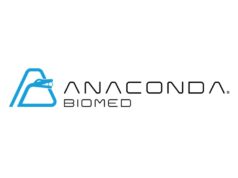A small study led by Julius Dengler, Charité, Universitaetsmedizin Berlin, Berlin, Germany, published ahead of print in Neurocritical Care has, according to the results, identified preliminary differences between using different types of probe technology to calculate the oxygen reactivity index (ORx) to asses traumatic brain injury (TBI) and subarachnoid haemorrhage (SAH).
Dengler et al compared the ORx and the resulting optimal cerebral perfusion pressures (CPPopt) of the simultaneously implanted Liscox (CC1.SB Integra Neuroscience, France) and Neurovent-PTO (Raumedic, Germany) probes in patients with severe TBI (GCS <9) or high-grade SAH (WFNS >4). The study was comprised of 11 patients with five suffering from SAH and six suffering from TBI. The Liscox probe was implanted in a more traumatised hemisphere in patients with TBI or on the side on the aneurysm in SAH patients. The Neurovent-PTO was placed within 20mm from the Liscox probe using a separate burr hole. Both probe positions were checked by CT scan and the ORx and CPPopt were monitored continuously.
The mean time of Pbr02 monitoring was 7.2+2.4 days. The mean ORx differed by 0.1 with the higher valued produced by the Liscox probe and CPPopt was calculable in 77% of cases and 66% for the Neurovent-PTO. According to the results, no specific pattern in the relationship of the probes was found.
“The main message of this study is that Liscox and Raumedic [Neurovent-PTO] did not produce agreeing values for ORx or CPPopt,” said Dengler et al “The disagreement between both probes was so consistent and so large that it does not in any way support the view that both probes can be interchanged or viewed as equivalently measuring ORx or CPPopt.”
The authors added: “Although the number of patients was rather limited in this study, we feel that the results suggest that ORx depends on the type of PbrO2 probe used for its measurement.”












